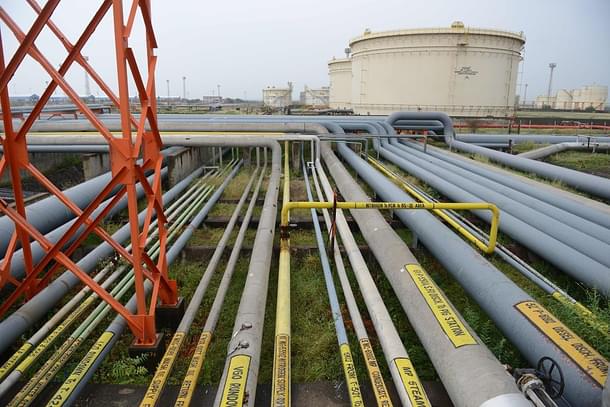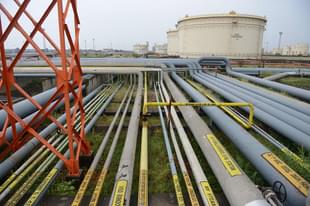News Brief
Oil Headed To $10 A Barrel As Russia-Saudi Fail To Resolve Price War, Coronavirus Lockdown Eradicates Fuel Demand
Balaji Subramanian
Mar 28, 2020, 01:39 PM | Updated 02:07 PM IST
Save & read from anywhere!
Bookmark stories for easy access on any device or the Swarajya app.


The coronavirus pandemic has spread all over the world forcing many countries into lockdown leading to an unprecedented fall in demand as well as prices of crude oil.
The West Texas Intermediate (WTI) traded at $21.61 per barrel on 27 March, while Brent crude was trading at a 16-year low of $26.02 per barrel last week on 18 March.
Even as the demand of oil continues to fall, Saudi Arabia is planning to increase its fossil fuel production, due to which the world may soon run out of space to store its extra oil, reports The Guardian.
A while back, Goldman Sachs, a leading global investment banking, securities and investment management firm, in its energy assessment said crude prices may touch the $20 per barrel mark.
It should be noted that, at the same time, India, which is the world's third-largest importer and consumer of oil, is exploring ways to leverage the drop of oil price and boost its ambitious Indian Strategic Petroleum Reserves programme (ISPRL).
The Indian government has decided to buy oil worth Rs 5,000 crore (about $670 million) at the current price of around $30 a barrel for deliveries starting in April-May.
However, the oil storage levels across the world’s storage facilities have already climbed to about three-quarters full on average. This started in the month of January when China shut down its major refineries based in its industrial heartlands.
According to analysts at energy consultancy firm Rystad Energy, Canada may be just days away from running out of storage for its own domestic oil production, and the oil-rich regions in Western Canada will need to curtail its production by about 400,000 barrels of oil a day before the month ends.
“Compounding the situation is the near-certainty of a steep reduction in crude-by-rail exports this year,” said Thomas Liles, an analyst at Rystad, “As well as deferral of spring maintenance at several key oil sands mining projects.”
As the storage facilities are reaching their brim, many countries may look to offshore Very Large Crude Carriers (VLCC) to store their extra crude oil. However, for this scenario to pan out, it would require oil prices to fall further.
Last week the oil traded at $25 a barrel which is a stark drop from more than $65 at the start of the year, and according to energy consultant firm Rystad, the price of oil may further drop to $10 a barrel this year.
Other reasons compounding to the problem faced by the oil industry is that Saudi Arabia is on a “vessel booking spree”, which has pushed freight rates “through the roof” in the past three weeks.
According to BloombergQuint, "Saudi Arabia has charted up more and more oil tankers as the kingdom prepares to flood the world with crude causing a surge in the cost of transporting crude."
The agreement between the Organisation of the Petroleum Exporting Countries (OPEC) and Russia to hold back oil production is due to end next month, that could lead to an oversupply of oil. If the deal collapses, it will allow Saudi Arabia, OPEC’s de facto leader, to increase production in a race to grab a greater share of the world oil-market.
In the meantime, various reports have emerged of China buying record tonnes of Russian oil, temporarily vindicating Moscow as it is in the midst of market share war with Saudi Arabia.
Reuters News has reported on Wednesday (25 March) that China is buying up 1.6 million tonnes of Russian Urals grade oil for loading over the next month. That’s a 400,000-tonne-plus increase over January loadings.
Rystad further estimates that the world has about 7.2 billion barrels of crude and products in storage. At the same time, some 1.3 billion to 1.4 billion barrels are onboard oil tankers at sea.
“At the current storage filling rate, prices are destined to follow the same fate as they did in 1998 when Brent fell to an all-time low of less than $10 per barrel,” said Rystad Energy analyst Paola Rodriguez-Masiu.
The current major oil-war may push production by more than 2.5 million barrels of oil a day, which would outpace demand for crude by 6 million barrels a day.





